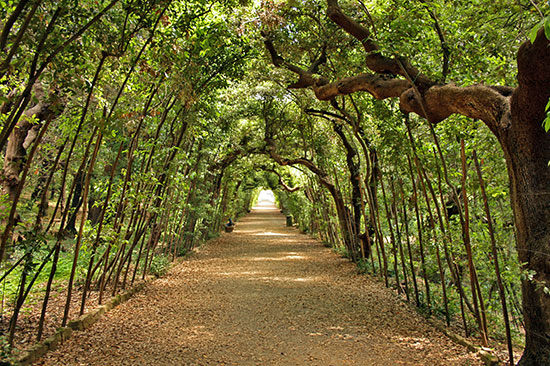It is said that in the late eighteenth century Hatice Sultan, sister of Ottoman reformist Sultan Selim III and bowed with creative curiosity for news from the West, fell in love at first sight with the gardens that festooned the former Danish trade ambassador´s mansion in Istanbul and immediately wanted a natural environment like in his palace.

Without caring about the scandal, she surrendered to the desire to walk when out on a whim around a Western-style garden, a maze of roses, acacias and lilacs she claimed to have dreamed of since childhood. In her dream there was a crystal ball, the base of a statue and a winged lion covered by nets of an unseen colour produced by stylish and tiny floating women working on stranger looms in a small annex pavilion, which years later she identified in an English painting as an European kiosk.
Apparently the painting was a gift of Antoine-Ignace Melling, the person recommended to her as the designer of these gardens that she so desperately desired. Born in 1763, Melling was an artist, architect and German mathematician, in whose veins ran also Italian and French blood. At the age of 19 he left the city of Strasbourg to obey the call of the East, in line with the emerging Romantic wave beginning to stir the conscience of Europe. Thus he came to Istanbul, where he would inhabit for the following two decades of his life.
Melling not only designed neoclassical style gardens and worked as an art adviser for Hatice Sultan, but he also scheduled annex pavilions and internal arrangements to the summer palace of Selim III which were characterized by a mixed taste introducing European elements without being disrespectful to the Bosporus landscape and aesthetic traditions. He loved Istanbul and he might have stayed there forever if he had not fallen from favor in the court so unexpectedly as irreparably.
Seventeen years after leaving the city, in 1819, he published a book in Paris, Voyagge pittoresque de Constantinople et des rives du Bosphore, where he had turned the detailed paintings and drawings made during his long stay in the ancient Byzantium into 48 large engravings.
Diecisiete años después de abandonar la ciudad, en 1819, publicó en París un libro, Voyagge pittoresque de Constantinople et des rives du Bosphore, en el que había convertido en 48 grandes grabados las detalladas pinturas y dibujos realizados durante su larga estancia en la antigua Bizancio.
For the writer and Nobel laureate Orhan Pamuk, whose uncle, the poet Sevket Rado, prepared a facsimile edition of Melling´s book in folio format in 1969- any other No other Western artist has ever better used as a theme the Bosphorus landscapes. These landscapes are envisaged with certain sadness resulting from knowing that most of the buildings represented, including those designed by the Melling, do not exist anymore.
Despite his uncanny mathematical precision, Pamuk admires this book because of that sensation these engravings transmit of not having a center or an end, precisely because that was how he perceived the city as a child and was walking along the Bosphorus.
 Paul Oilzum
Paul Oilzum
Despite the disappearance of the kiosks and mazes created by Melling, this “fairy-tale feeling of the city not having a center or an end”, continues lording the visitor, as you´ll see when you rent one of the apartments in Istanbul?

 English
English


